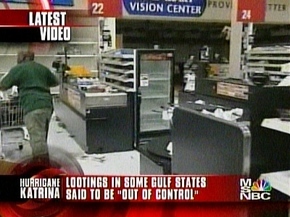In a recent book, written for business managers, MIT business school professor David Simchi-Levi and his co-authors, discuss the secret of Wal-Mart’s success. In the following discussion a "cross-docking" system is one in which ". . ., warehouses function as inventory coordination points rather than as inventory storage points." (p. 63)
The tremendous market growth of Wal-Mart over the past 15 to 20 years highlights the importance of an effective strategy that coordinates inventory replenishment and transportation policies. Over this time period, Wal-Mart developed into the largest and highest-profit retailer in the world. A number of major components in Wal-Mart’s competitive strategy were critical to its success, but perhaps the most important has been its enthusiastic use of cross-docking. Wal-Mart delivers about 85 percent of its goods using cross-docking, as opposed to about 50 percent for Kmart. To facilitate cross-docking, Wal-Mart operates a private sattelite communications system that sends point-of-sale (POS) data to all its vendors, allowing them to have a clear picture of sales at all its stores. In addition, Wall-Mart has a dedicated fleet of 2000 trucks, and on-average, stores are replenished twice a week. Cross-docking enables Wal-Mart to achieve economies of scale by purchasing full truckloads. It reduces the need for safety stocks and has cut the cost of sales by 3 percent compared with the industry average, a major factor explaining Wal-Mart’s large profit margins. (p. 64)
Source:
David Simchi-Levi, Philip Kaminsky, Edith Simchi-Levi. Managing the Supply Chain: The Definitive Guide for the Business Professional. McGraw-Hill, 2003.

